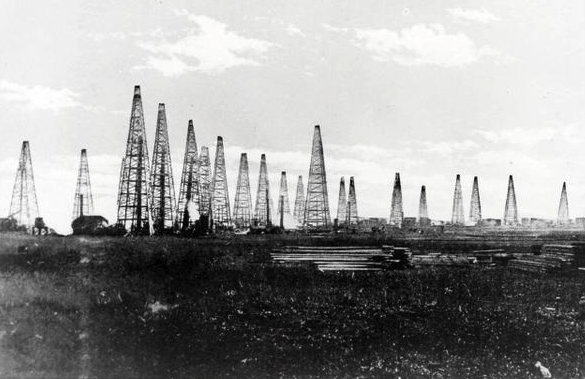The Informer: SW La. oil production reached 35,000 barrels daily in 1933
Published 5:58 am Saturday, October 4, 2025
“The oil industry of Southwest Louisiana isn’t looking back, but if it were, it would see 1933 as the biggest year in the oil history of this section.” That’s how the Lake Charles American Press described the area’s record-production peak on its Dec. 29, 1983, front page.
Looking back on that year’s accomplishments, the newspaper said the production of 35,000 barrels of oil daily was the biggest feat followed by a new high in drilling development that kept “50-odd wells on the active operation list for the last several months.”
The first producing oil well in Louisiana was located at the Sulphur Mines in 1886. While early attempts at oil extraction in the West Calcasieu region failed between the 1860s and 1870s, this 1886 well was the first successful discovery for producing oil in the state.
Captain J.W. Bryan, who was editor of the Lake Charles Echo — a weekly newspaper that published from 1876 to 1898 — said in March of 1886 the original “gusher” of the south was struck by employees of the Louisiana Petroleum & Mining Company, which was then trying to find a method by which the immense deposits of sulphur could be utilized.
“We are reliably informed that the second well being bored at the Calcasieu sulphur mines near the Sulphur City has reached the depth of 400 feet, at which they have struck petroleum oil in abundance which is flowing rapidly out of the tube,” Bryan wrote.
Bryan said after reaching the 400-feet mark, the men struck rock bed and “all at once the drill, which was being forced down by 40 pounds of steam in addition to the weight of the pipe, which was about 800 pounds, began to rise and the pump which supplied the water failed to work.”
In the next issue, Bryan wrote that as a cap was removed from the pump “the heavy accumulation of gas and oil in the pipe and pump gushed out, knocking one of the operators down. The gas lasted only for awhile, throwing the oil thirty feet high.”
He said the oil then “settled down” to a regular flow estimated to be about 25 barrels a day.
Oil was discovered in Vinton in 1913.
“At a depth of approximately 2,000 feet, the well came in last night gushing some 2,000 barrels, according to a rough calculation; reports received from the field today indicate that during the night the production increased until now a stream of approximately 4,000 barrels is gushing out,” the July 30, 1913, edition of the Lake Charles American Press reported.
The East Hackberry field was discovered in the marshlands of Cameron Parish in 1927 using a seismograph survey that had been completed in 1926.
On Nov. 7, 1927, the Caldwell No. 2 well began producing with an initial flow of 800 barrels of oil per day. This followed an initial test well that blew out and cratered.
“Science has been brought into play in the location of potential fields,” World’s Work magazine reported in a 1926 article about the Lake Charles area.
“They introduced the torsion balance, a delicate instrument which measures and records the density of the earth’s surface, and the seismograph, which records the rapidity with which an earth’s tremor or sound wave induced by a charge of dynamite travels through the earth. There are two torsion balance crews and ten seismograph crews working in the country around Lake Charles now and almost the whole countryside — some two million acres — is under lease to one company or another.”
